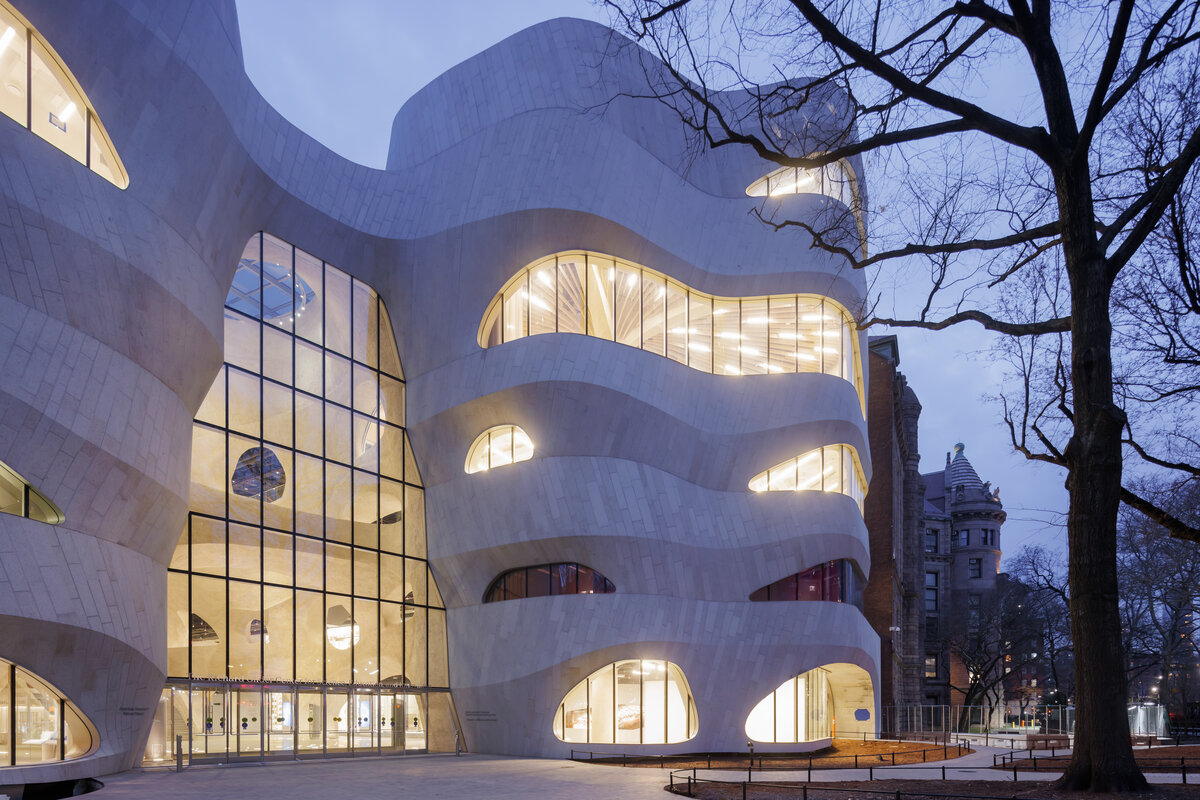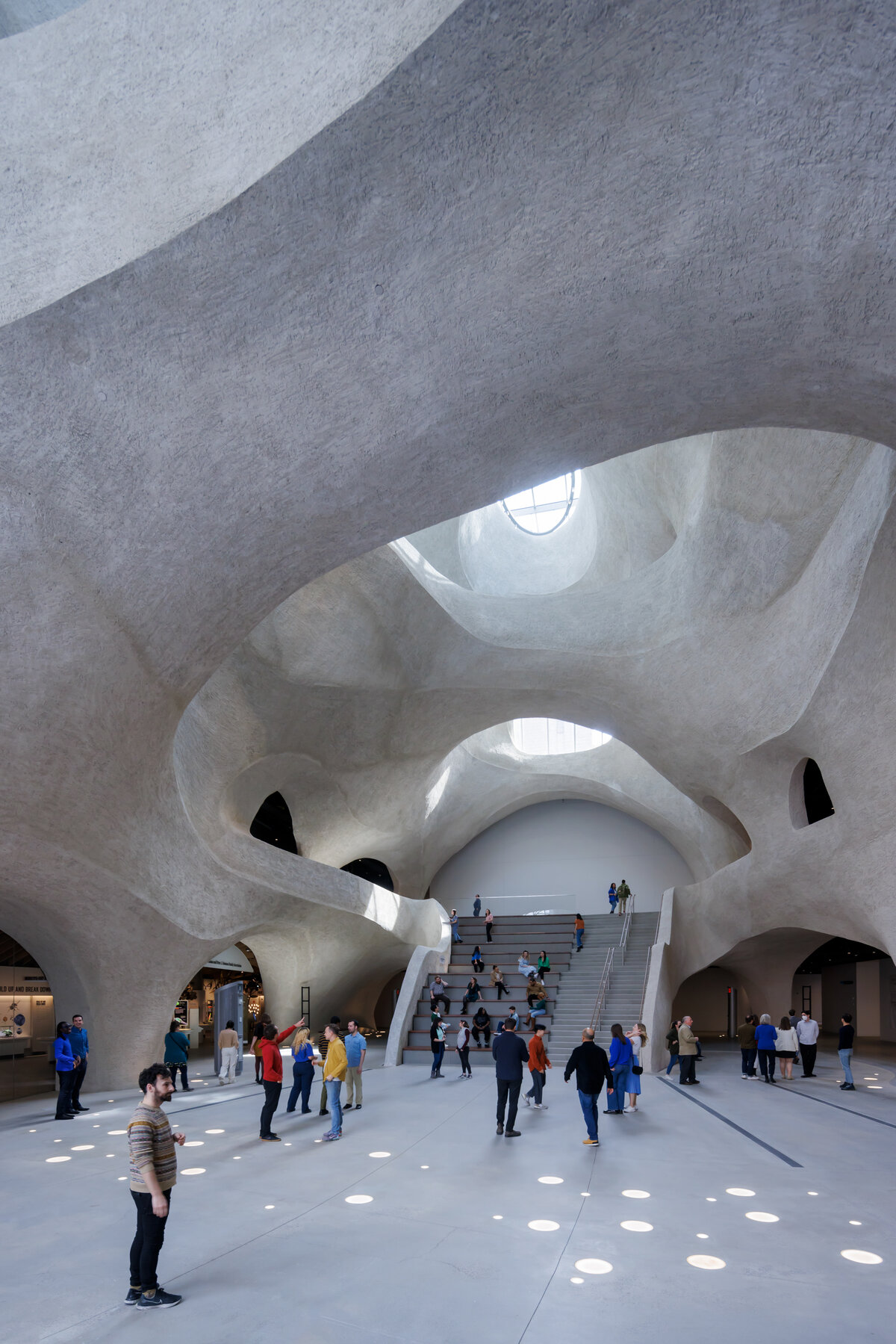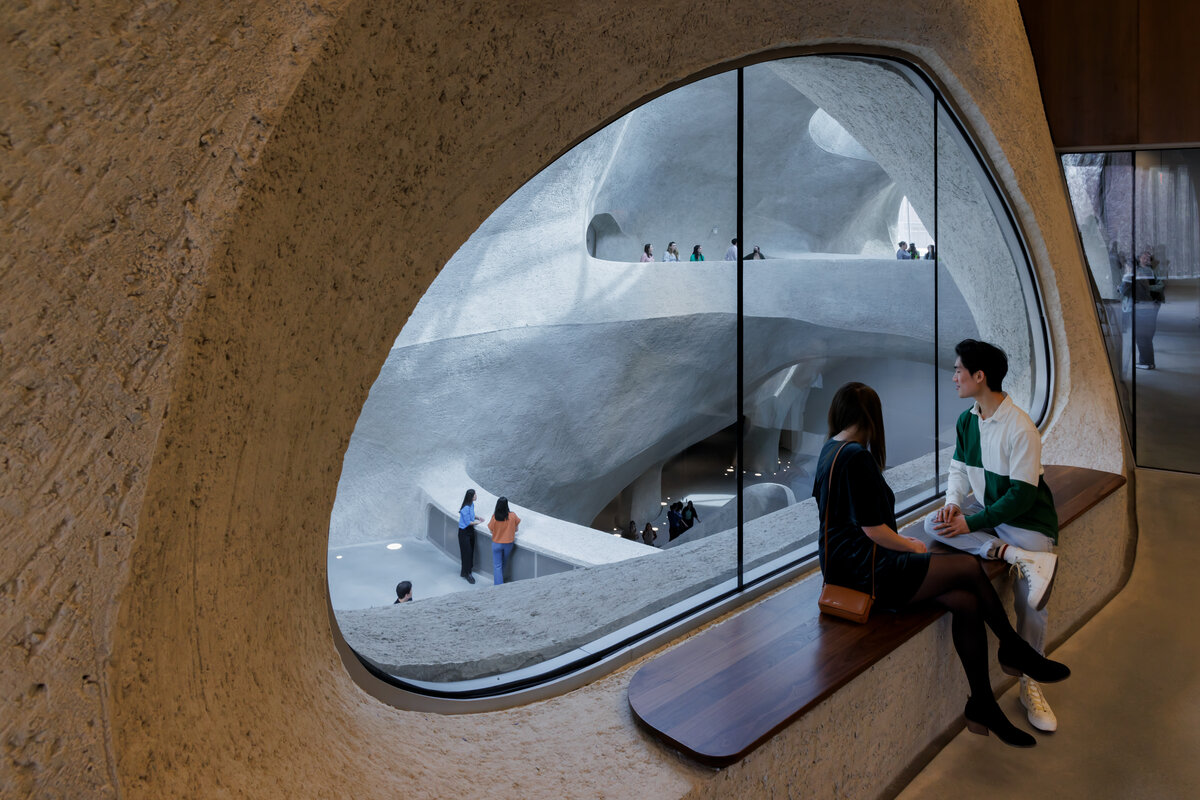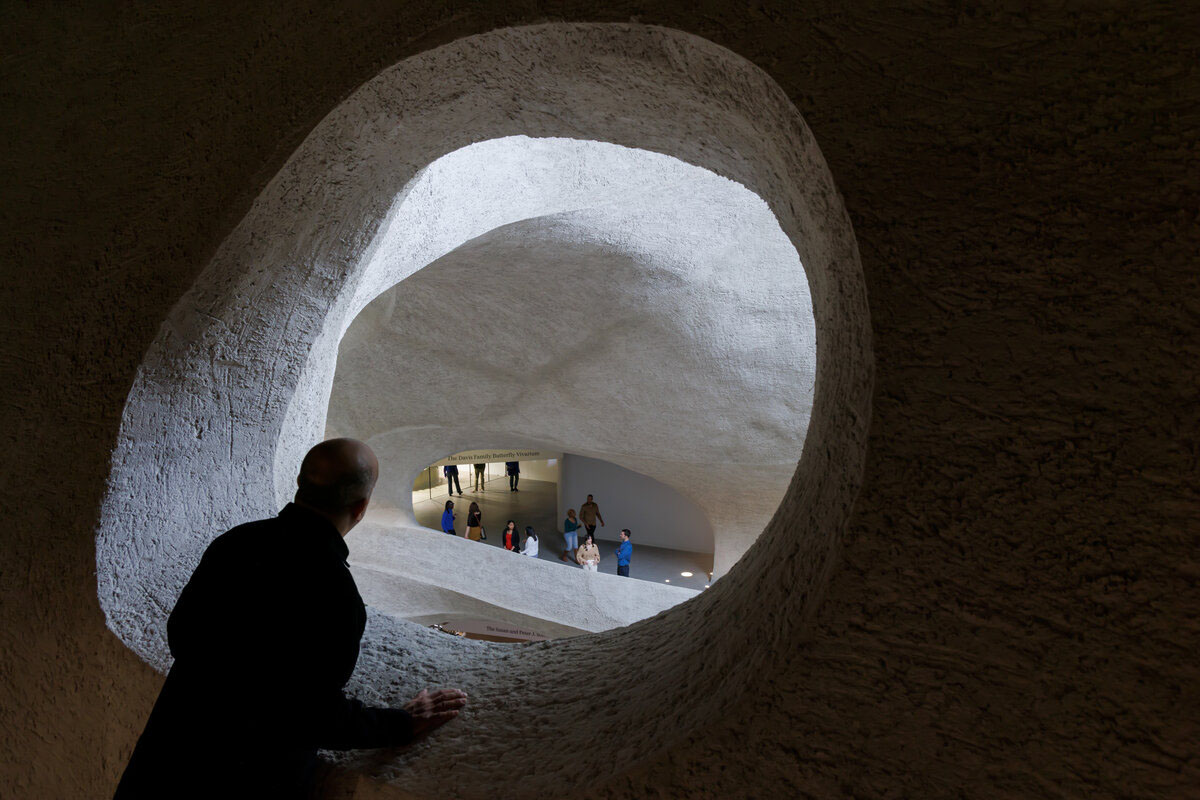Submitted by Palak Shah
Studio Gang's Richard Gilder Center For Science, Education & Innovation Opens Door on May 4th, 2023
United States Architecture News - Apr 21, 2023 - 06:26 3766 views

Globally recognized and known, the American Museum of Natural History’s much anticipated Richard Gilder Center for Science, Education, and Innovation will welcome the public on May 4th, 2023 after the $465 million project was first announced in the year 2014.
Designed by Studio Gang, the leading architecture and urban design practice led by Jeanne Gang, the Gilder Center is the latest in a series of major projects over the last three decades that have transformed the Museum’s campus, its science, educational and exhibition spaces, and all four facades, including Central Park West (2012 and 2021) and the 77th Street “castle” façade (2009), which have been articulately restored.

Kenneth C. Griffin Exploration Atrium. Image © Iwan Baan
Comprising six stories above ground, four of which remain open to the public, the building also situates an additional story underground. Spread along 230,000 square feet (21,365 sq mt), the Gilder Center is designed using 33 connections between 10 museum buildings, linking the campus holistically as well as creating an entrance that is welcoming of the west side. The articulated design uses elevation as well as gentle and flowy curves to blend the existing museum buildings with the new ones for the visitors entering from Columbus Avenue. Enhancing the vicinity are parks with beautiful pathways, seating areas & landscapes designed and developed by Reed Hilderbrand with the help of community inputs.

Fourth-Floor Bridge Links and Connections. Image © Iwan Baan
The undulating façade of the Gilder Center offers a visual link between two sides of the campus, while the bird-safe fritter glass, clad with Milford pink granite, opens wide-view expanses for its campus users. The diagonal pattern of the stone panels is in place to evoke a sense of geological layering and embrace the rich textures of masonry complimentary to its adjoining site context.
"The Gilder Center is designed to invite exploration and discovery that is not only emblematic of science, but also such a big part of being human. It aims to draw everyone in—all ages, backgrounds, and abilities—to share the excitement of learning about the natural world," said Jeanne Gang, founding principal and partner of Studio Gang.
"Stepping inside the large daylit atrium, you are offered glimpses of the different exhibits on multiple levels. You can let your curiosity lead you. And with the many new connections that the architecture creates between buildings, it also improves your ability to navigate the Museum’s campus as a whole."

Sightlines from Third-Floor Bridge. Image © Iwan Baan
Once one steps inside the Gilder Center, visitors find themselves in the five-story tall atrium, a magnanimous space glistening with natural light seeping through the large-scale skylights. The design of the building also accounts for the direction of wind & water that carve through a landscape which is an exploration as well as creates hot water etches within ice blocks.

Window Aperture in the David S. and Ruth L. Gottesman Research Library and Learning Center. Image © Iwan Baan
Visually the texture, color, and free-flowing forms of the Griffin Atrium draw inspiration from the canyons in the southwestern US and create a phenomenon of awe, excitement, and discovery. Its dynamic structure is achieved by spraying concrete onto rebar without using any conventional formwork by means of a specific technique known as “shotcrete”. The vertical nature of the Griffin Atrium is a tool to draw light and air circulation into the heart of the building’s interior. As one experiences the Griffin Atrium, a broad, grand staircase on the east side is designed to create respite and conversation by offering seating steps on one end and deep, walnut-covered treads and high risers on the other.

Third-Floor Aperture. Image © Iwan Baan
"The American Museum of Natural History is one of New York's greatest treasures, making science and technology accessible to learners of all ages," said New York State Governor Kathy Hochul.
"New York State was proud to play a role in creating the new Gilder Center for Science, Education, and Innovation with funding through the Regional Economic Development Council initiative. This transformative project will give New Yorkers and visitors from across the world an opportunity to experience the Museum’s vast, new windows into our natural world."
Top Image: The Gilder Center at Dusk. Image © Iwan Baan.
All images © Iwan Baan.
